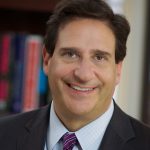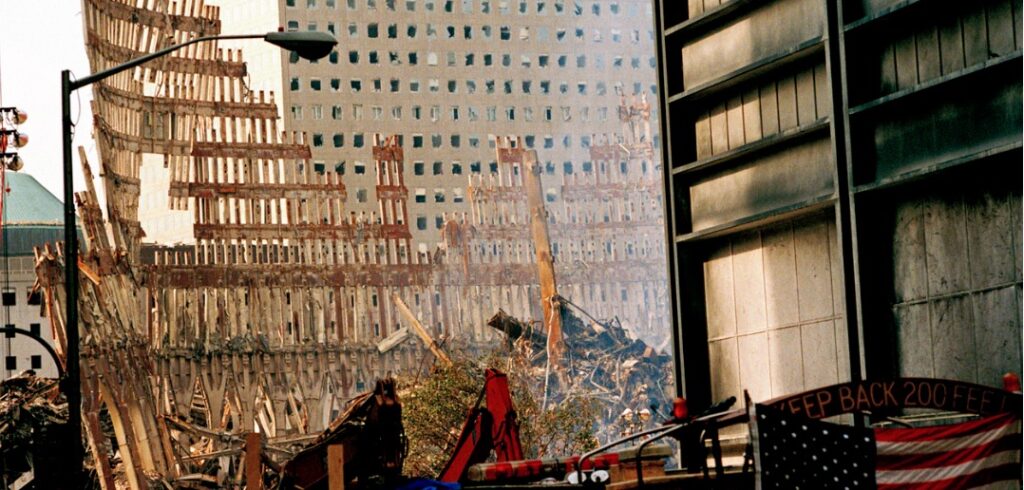On September 14, 2001, just three days after the most deadly terrorist attack on American soil, the leaders of the three largest bar associations in New York state came together to discuss how New York’s legal community could be of service in a time of critical need for the city and its residents.
They agreed to divide up the substantial work required to address the aftermath: the New York County Lawyers Association would handle death certificates and estate issues, the State Bar would coordinate finding space and resources for the lawyers who had had their offices shut down or destroyed, and the City Bar would help to organize volunteers to assist victim’s families.
A Mammoth Undertaking
This story is just one of many included in a comprehensive report, “Public Service in a Time of Crisis: A Report and Retrospective on the Legal Community’s Response to the Events of September 11, 2001,” developed in part by Fordham Law’s Louis Stein Center for Law and Ethics and published in the Fordham Urban Law Journal in 2004. It documents how the legal community organized itself and came together to serve the victims and survivors of the 9/11 attacks.

The Stein Center’s involvement originated as a project undertaken by Fordham Law students in a public-interest lawyering seminar—co-taught by Dean Matthew Diller, then associate dean for academic affairs at Fordham, and Professor Bruce Green, Louis Stein Chair and director of the Stein Center—in connection with Fordham’s Stein Scholars Program. It later evolved into a combined effort including the Stein Center, the Association of the Bar of the City of New York, and the National Association for Law Placement (NALP) Foundation for Law Career Research and Education—which began compiling information about how the legal community responded to the attacks beginning in 2002. “Ultimately, 12 Fordham students were among the many lawyers, students, and paralegals who contributed to the report by gathering information and/or drafting portions of it,” recalls Green.
The report is a highly-detailed account of the public service work done by lawyers in the aftermath of 9/11. New York Court of Appeals Chief Judge Judith Kaye, a guiding force behind the New York bar’s post-9/11 efforts, contributed the introduction to the report, describing it as “a comprehensive textbook on how best to deliver pro bono services” as well as a lasting “chronicle” of the thousands of legal professionals who worked towards the public good under extraordinary circumstances.
Lessons Learned
After enduring an unimaginable tragedy, those affected by the attacks had to deal with a range of legal issues, including administering trusts and estates, applying for aid, and applying for death certificates, while others were dealing with immigration issues or faced discrimination in the aftermath of the attacks.
Among its findings, the report noted that approximately 3,000 lawyers received training through various 9/11-centered programs and more than 4,000 individuals and families affected by 9/11 were represented on a pro bono basis by volunteer lawyers.
“The legal community totally stepped up and provided services and representation to people in crisis in new and unprecedented ways. And that formed the model that has been built on new and, unfortunately, subsequent disasters,” says Fordham Law School Dean Matthew Diller— one of nine members, along with Green, in the working group that oversaw the report. “It is amazing how quickly networks can be put together and bridges built.”
In the aftermath of 9/11, lawyers from diverse practise areas gathered together to assist those in need in an organized and collaborative manner. Among their innovations was the idea to have individual lawyers serve as “navigators” that would allow clients to access all the different services they needed through one contact person, streamlining the process considerably.

“The report illustrates something that public interest lawyers already understood but that much of the bar may not have fully appreciated, which is how many different but interconnected legal and nonlegal needs people in crisis may have,” says Green.
As New York, the nation, and the world commemorate the twentieth anniversary of 9/11, the report provides a look back at some of the best aspects of New York’s legal community and the deep impact of their work in a moment of historic crisis.
“The legal community organized its relief effort for the benefit of those affected by 9/11, but in the end there were many beneficiaries, including those directly affected, the lawyers and other volunteers who helped, and the legal community as a community, not to mention New York City itself,” the report noted. “There can be little doubt that 9/11 was the catalyst for what can aptly be characterized as a ‘defining moment’ for the legal profession.”

